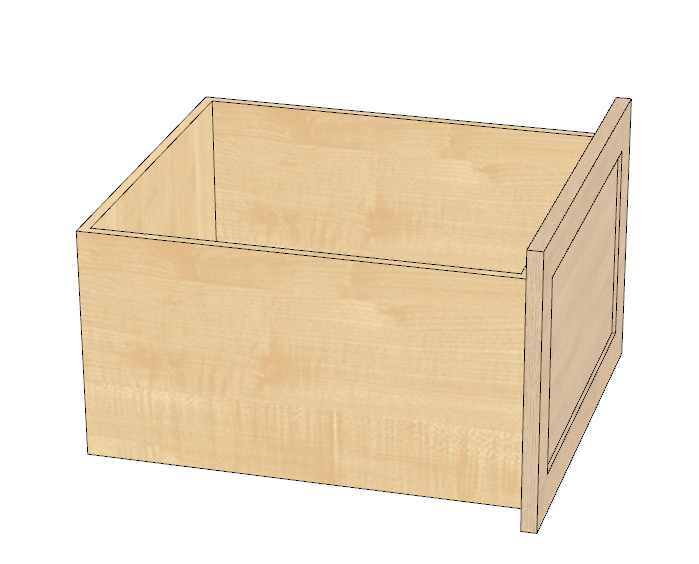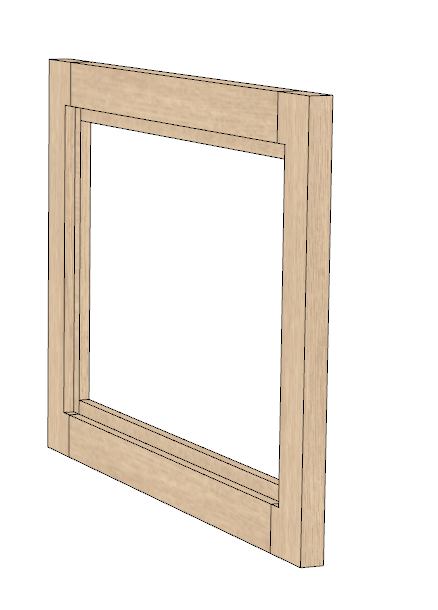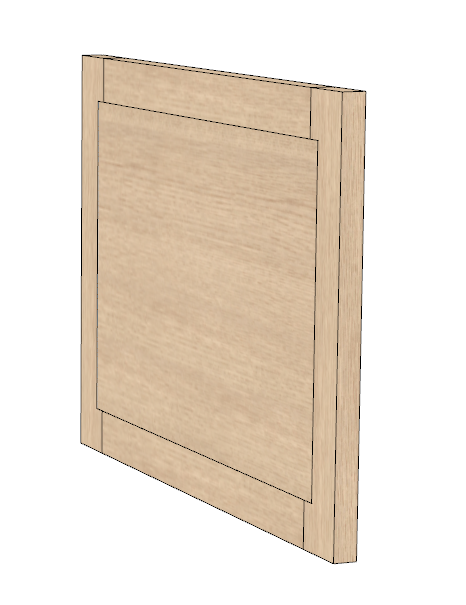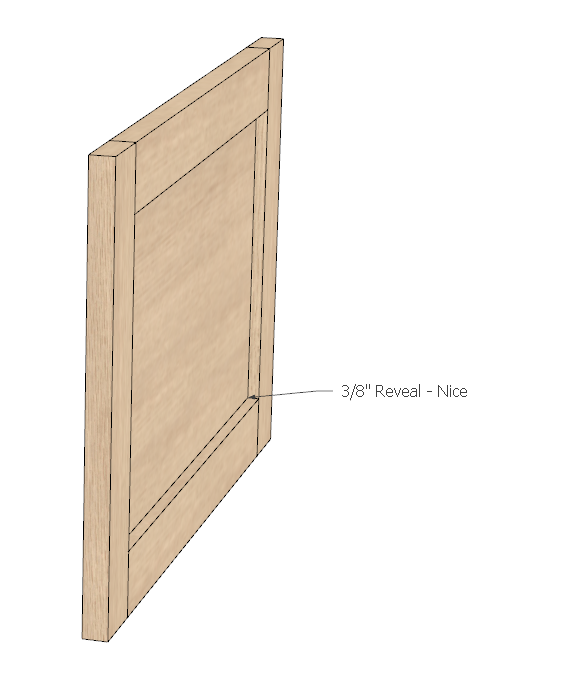02-15-2022, 10:21 AM
So for my kitchen project, the carcass work is all planned out and underway.. All base cabinet storage is drawers, some quite deep (er, "tall" as it were) to store large pots/crock-pots etc. based on planning out for the things we have and want to store.
I'm planning on using solid 1/2" maple, dovetailed, for all boxes with 1/2" maple plywood for the bottoms.
My question here is two-fold.
For the very deep drawers, must I make the sides nearly as tall as the front? Consider this example where the F&P false-front is nearly 14" tall:




For the purpose of holding a large pot and drawing it in and out, surely the short-sides is equally functional. But is it odd looking or in need of additional support behind the large drawer front?
This leads to the 2nd question and that's about the gap between the panel, and the box. If I were to be making these panels out of solid wood, I'd use 3/4" material, rabbeted so it fits in the groove but remains flush with the back. However for this whole kitchen worth of cabinets I'm not making solid wood panels. I'm using 1/4" MDF veneered on both sides with 1/16" riftsawn white oak veneer. This brings the total panel thickness to 3/8". If the panel is contained within the rails/stiles in a traditional way, I'd be left with a 3/16" gap between the box and the panel, which I think would be undesirable, especially if the box itself isn't tall enough to hide the whole thing:


Which makes me think, perhaps a non-traditional approach to F&P construction, whereby the rails and stiles are joined with M&T as normal, but instead of a centered groove encapsulating the floating panel, I could instead rabbet the rails and stiles and then glue the 3/8" veneered panel into place, flush with the back of the rails and stiles:




The added benefit here, visually, is that I get a 3/8" reveal on the front rather than only 3/16" which I think might look nicer:


But it seems very untraditional and like it's cheating or poor workmanship (even though probably nobody will ever look at this detail!)
Thoughts?
Thanks!
I'm planning on using solid 1/2" maple, dovetailed, for all boxes with 1/2" maple plywood for the bottoms.
My question here is two-fold.
For the very deep drawers, must I make the sides nearly as tall as the front? Consider this example where the F&P false-front is nearly 14" tall:


For the purpose of holding a large pot and drawing it in and out, surely the short-sides is equally functional. But is it odd looking or in need of additional support behind the large drawer front?
This leads to the 2nd question and that's about the gap between the panel, and the box. If I were to be making these panels out of solid wood, I'd use 3/4" material, rabbeted so it fits in the groove but remains flush with the back. However for this whole kitchen worth of cabinets I'm not making solid wood panels. I'm using 1/4" MDF veneered on both sides with 1/16" riftsawn white oak veneer. This brings the total panel thickness to 3/8". If the panel is contained within the rails/stiles in a traditional way, I'd be left with a 3/16" gap between the box and the panel, which I think would be undesirable, especially if the box itself isn't tall enough to hide the whole thing:

Which makes me think, perhaps a non-traditional approach to F&P construction, whereby the rails and stiles are joined with M&T as normal, but instead of a centered groove encapsulating the floating panel, I could instead rabbet the rails and stiles and then glue the 3/8" veneered panel into place, flush with the back of the rails and stiles:


The added benefit here, visually, is that I get a 3/8" reveal on the front rather than only 3/16" which I think might look nicer:

But it seems very untraditional and like it's cheating or poor workmanship (even though probably nobody will ever look at this detail!)
Thoughts?
Thanks!




